From extensive safety measures to its large cargo space, the Subaru Forester sets the standard for the Compact SUV class.
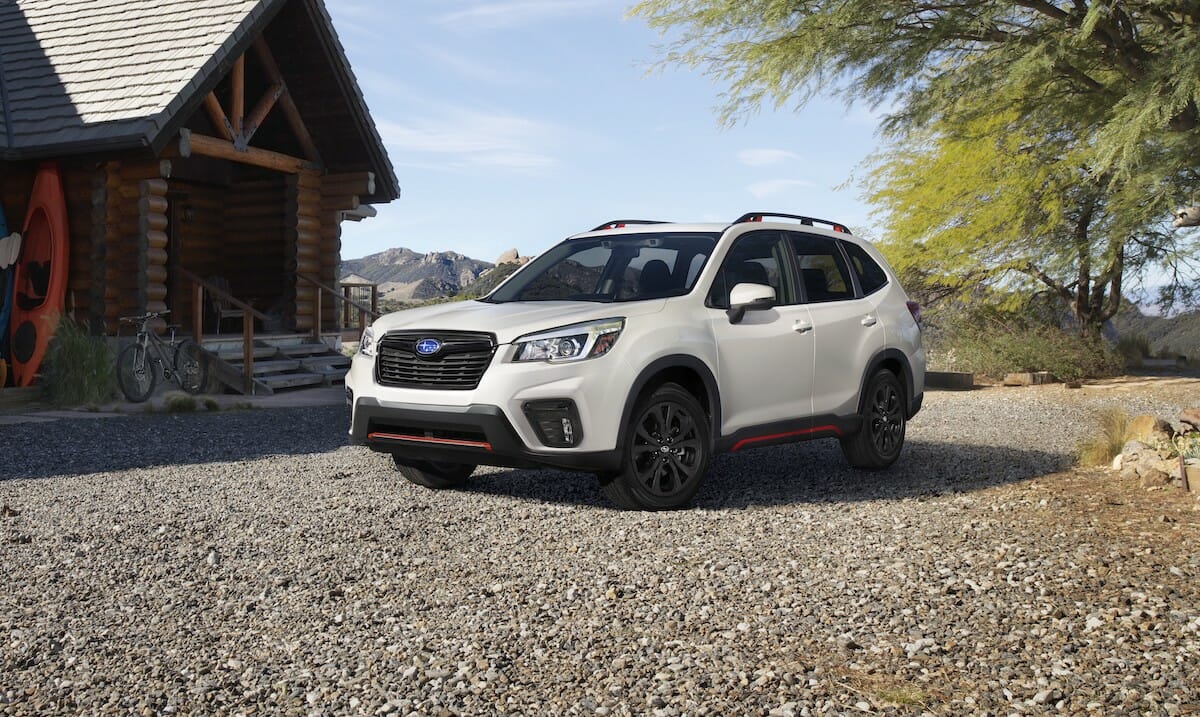
In 1997, Subaru announced an Impreza-based crossover that would be named the Forester. The trademark for the Forester in the years to come was its boxy exterior and rugged design. A key difference between the Forester and its competitors is its low design.
In fact, the Forester was so low that it did not need the “risk of rollover” warning on the visor. This meant the Forester had the capabilities of an SUV, but essentially drove like a car. Subaru described this trait as “SUV tough, Car Easy.”
Upon release, the new Forester had fit comfortably between the smaller Impreza and larger Legacy. Today, it’s a road legend. Let’s check out its history of raves and recalls, road trips and crash tests to find the best Forester year for car buyers shopping for a new or pre-owned Subaru SUV.
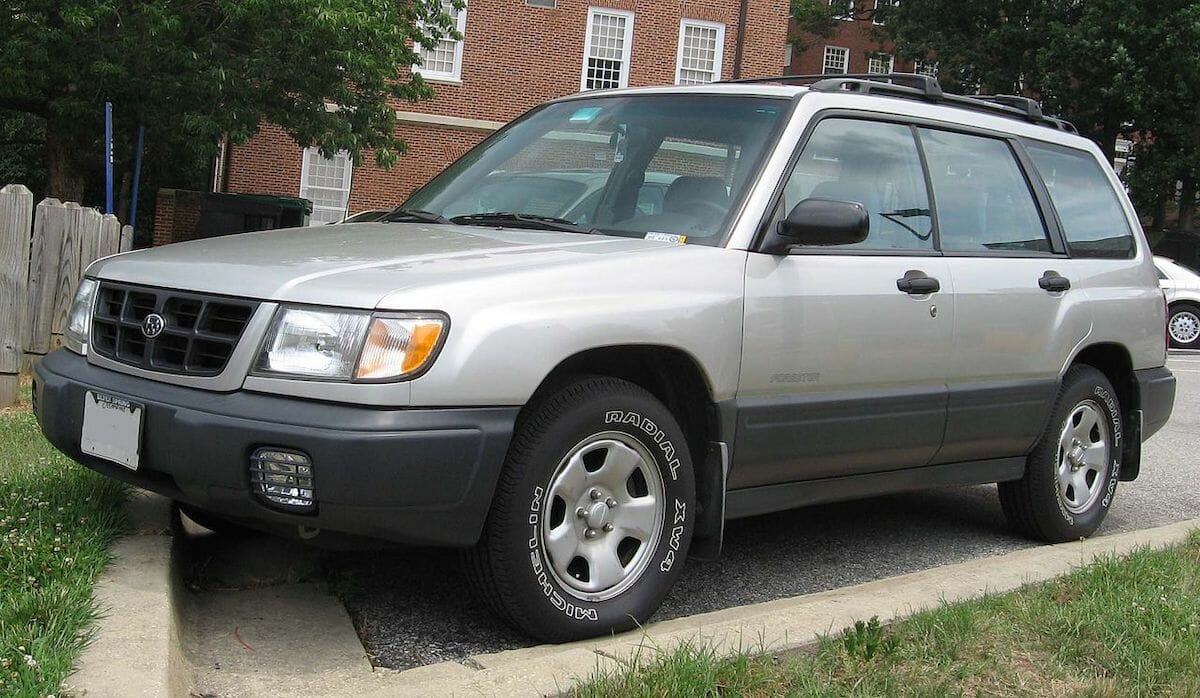
Subaru Forester First-generation (1998-2002)
The Subaru Forester rolled into showrooms for the 1998 model year. Although it shared many similarities with the Impreza, there were key differences between the two. Of course, the Forester was taller and came equipped with an all-wheel-drive (AWD).
However, what made the forester so attractive was that it had the best of both the SUV and car worlds. From the SUV world, the Subaru Forester received 7.5-inches of ground clearance and a spacious interior.
From the car world, the Forester received its sporty handling and on-road capability. This crossbreed meant that it was easy to get in and out of, but also easy to load cargo since it was slightly lower than rival SUVs of its time.
The first-ever Forester received a 2.5L H4 dual overhead camshaft (DOHC) engine.
However, for the 1999 model year, this DOHC engine was scrapped for a 2.5L H4 single overhead camshaft (SOHC) engine. Both engines came coupled with a four-speed automatic or five-speed manual transmission.
The standard AWD system used a 60/40 split for power between the front and rear wheels, respectively. However, the AWD system dynamically adjusted the power split as needed.
When going up-hill, the AWD system would put more power to the rear. When the weight shifted forward, such as going down a hill, the Forester would add more power to the front.
First-generation Forester Trims
- Base: Standard equipment on the base model Forester was highly competitive. It came loaded with air conditioning, power windows, a temperature gauge, fog lights, a roof rack, tilt steering, and an AM/FM radio with a cassette player.
- L: The grade-above L trim added power door locks, minor restyling, and an anti-lock braking system (ABS).
- S: The top-shelf S trim came with even more goodies. These goodies included a chrome grille, alloy wheels, larger tires, disc brakes in the rear, and cruise control.
First-generation Forester Yearly Updates
- 1999: The 2.5L DOHC engine was dropped for the 2.5L H4 SOHC unit. This new engine was slightly more efficient and brought the highway mpg to 25 for the Forester as compared to the previous 24. Also, the transmission was upgraded, the performance was increased, and the L and S trims received more standard equipment.
- 2000: All trims received an upgrade: the base trim was now $100 more expensive, the L trim received cruise control, and the S trim received a limited-slip differential.
- 2002: More standard equipment was added to the Forester. Upgrades included a cargo area cover, intermittent rear wipers, and daytime running lights.
First-generation Forester Problem Areas
As is normal for the Subaru brand, the Forester was exceptionally safe and reliable. The IIHS gave the Forester an overall evaluation of good. According to the NHTSA, the Forester received one recall and just over 100 complaints on average per model year. Common problems on the first-generation Forester were the vehicle not shifting into drive, rear-wheel bearings failing, and the common Subaru problem of a head gasket blowing.
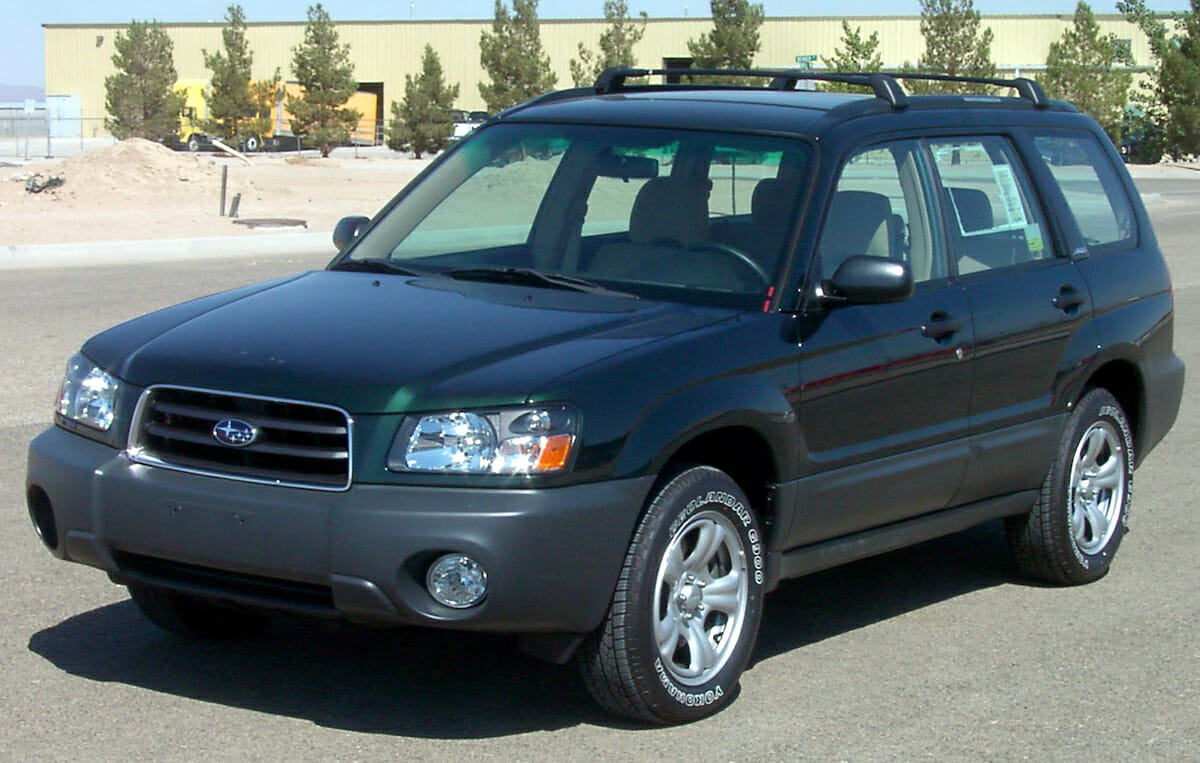
Subaru Forester Second-generation (2003-2008)
The second-generation Forester bore a striking resemblance to the previous Forester. Similar to the previous generation, it shared the Impreza’s platform, came standard with AWD, and the 2.5L H4 engine returned.
However, there were many refinements made to the latest generation. It was even larger than the previous generation, increasing cargo space.
Also, the new Forester weighed 100 lbs less than the previous generation. This is thanks to an aluminum hood, perforated rails, and a hydro-formed sub-frame. Other changes included a reshuffled trim lineup and turbo engine offerings for the later model years.
Second-generation Forester Trims
- X: The base model X came with power equipment, air conditioning, cruise control, tilt steering, 16-inch wheels, a 100-watt radio with a CD player, and remote keyless entry.
- Sports X: Added automatic climate control, MP3 compatibility, and an in-dash CD changer.
- Sports XT: The Sports XT was similarly equipped to the Sports X trim. However, it added a turbo, 17-inch wheels, a limited-slip differential, and rear disc brakes.
- XS: The up-level XS came with extra features such as automatic climate control, alloy wheels, a six-disc CD changer, and a leather-wrapped steering wheel and shifter.
- XT: The XT trim comes with all of the equipment on the XS and added a turbo to the 2.5L H4 engine.
Second-generation Yearly Updates
- 2004: The turbo-powered XT trim was made available to buyers.
- 2005: The standard four-cylinder engine was upgraded. It could now be paired with a redesigned four-speed automatic transmission. Also, electronic throttle control was added.
- 2006: Several powertrain upgrades were added to the Forester. The standard four-banger was now fitted with a variable valve-lift system that increased performance by eight-horsepower. Thanks to a redesigned intake, exhaust, and higher compression ratio, turbocharged Foresters received a 20 hp increase as well as lower emissions. In the name of performance, both the manual and automatic transmissions were tweaked along with the suspension.
- 2007: The Sports 2.5 X and Sports 2.5 XT trims were added to the lineup. Apart from the base model, all Foresters received MP3 compatibility. However, the most important upgrade the Forester received was the addition of bottle holders to the front door cards.
- 2008: Stability control was made standard for all turbocharged Foresters paired with an automatic transmission.
Second-generation Forester Problem Areas
Like the last generation, the second-generation Forester was quite reliable. It averaged about 100 complaints to the NHTSA per model year. Common problems included a smell of fuel inside the cabin, rust on the subframe, and airbags that do not deploy.
It should be noted that these problems were mostly resolved for the later model years (2005-2008). Like its predecessor, the new Forester was exceptionally safe. It received top marks from the IIHS for every model year and even attained a Top Safety Pick for the 2007 and 2008 model years.
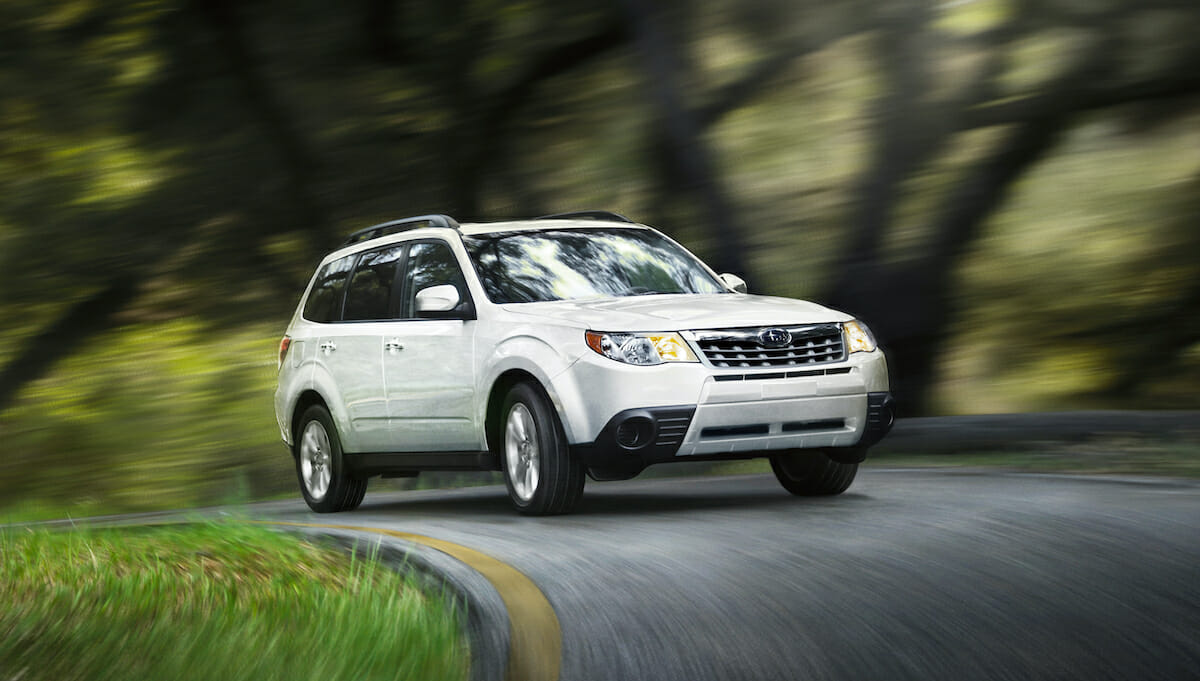
Subaru Forester Third-generation (2009-2013)
Sporting a more rounded and less boxy design, the third-generation Forester hit showrooms for the 2009 model year. Here is where the Forester shifted from being a wagon to just another small SUV. The Forester grew yet again. Subaru made the Forester three inches longer, 1.8 inches wider, 4.3 inches taller, and added 3.5 inches to the wheelbase.
Incredibly, although the Forester got “larger” the interior and cargo space decreased. AWD remained standard and drivers still had the choice between a five-speed manual or a four-speed automatic. However, a new 170 hp 2.5L H4 engine was fitted to the Forester.
Third-generation Forester Trims
- X: The X trim received 16-inch steel wheels, keyless entry, cruise control, full power accessories, and a four-speaker radio with a CD player and AUX jack.
- XT: In addition to adding a turbo, the XT added 17-inch alloy wheels, fog lights, a rear spoiler, roof rails, a sunroof, a tilt and telescoping steering column, reclining rear seats, and a six-speaker sound system complete with a six-CD changer.
- X Limited: The X limited added heated mirrors, automatic climate control, a power driver seat, heated front seats, and leather upholstery.
- XT Limited: The XT limited came with everything that the X Limited came with plus a turbo.
Third-generation Yearly Updates
- 2011 Subaru Forester: The naturally aspirated 2.5L H4 was tweaked to improve fuel economy and performance. The 2.5X Touring and 2.5XT Touring trims were added to the lineup.
- 2013 Subaru Forester: All Foresters received Bluetooth capability as well as a USB port.
Third-generation Forester Problem Areas
When it came to safety, the third-generation Forester was a sound investment. It received an IIHS Top Safety Pick for every model year. This is unsurprising because it received top marks across the board. However, when it came to reliability, the Forester’s character can only be described as questionable.
The Forester received about 140 complaints per model year according to the NHTSA. Common complaints included unintended acceleration, a leaky head gasket, a faulty weld on the driver’s seat causing it to detach, and oil leaking from the valve seals.
The biggest problem with the third-generation Forester, however, was the airbags. The airbags have been recalled nine times by Takata. The problem was that when the airbag inflated it propelled shrapnel with it, essentially sending a fragmentation grenade straight to the face.
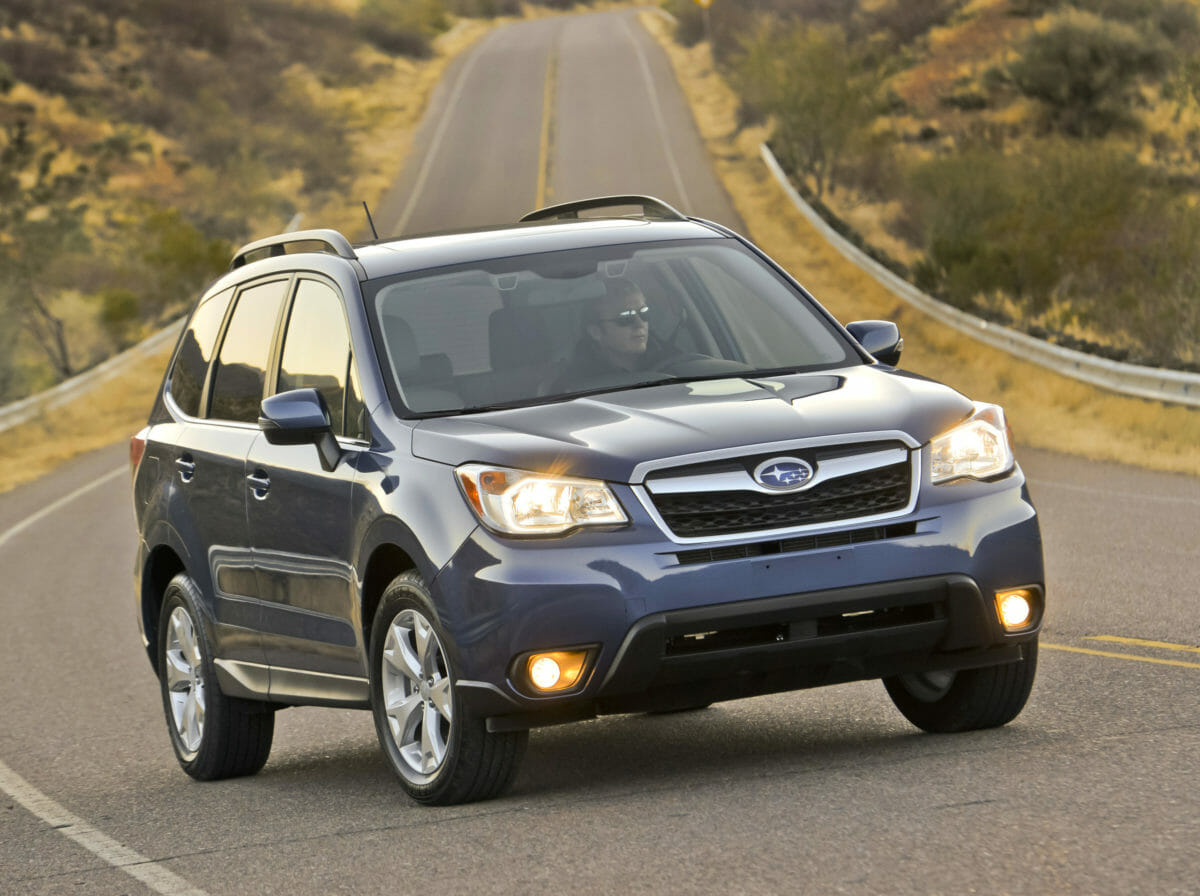
Subaru Forester Fourth-generation (2014-2018)
The fourth-generation Forester was released for the 2014 model year. With the release of a new Forester came massive changes. As usual, the Forester grew, it received a one-inch longer wheelbase, .6 more inches of width, and getting 1.4-inches longer.
Rationally, since the Forester grew on the outside, the cargo room and rear-seat legroom also increased. Subaru also added their EyeSight Driver Assist System as an option to the Touring trim Forester. EyeSight Driver Assist System is Subaru’s suite of driving assists.
X mode was added to the Forester for the fourth generation. This is used to keep drivers from getting stuck in inclement weather situations. Simply, X mode works by monitoring wheel-slip. When a wheel slips the brake is applied to that wheel, and power is applied to the opposite wheel.
Finally, and perhaps most importantly, a continuously variable transmission (CVT) was added to the lineup. Although the CVT marginally improved fuel economy, it cut the old 3,000 lb. max towing capacity in half. All models except for the 2.5i and 2.5i Premium trims came standard with the new CVT. Whereas the 2.5i and 2.5i Premium trims came standard with a six-speed manual transmission.
Fourth-generation Forester Trims
- 2.5i: Standard equipment included 17-inch steel wheels, power accessories, cruise control, Bluetooth, a tilt-and-telescoping steering wheel, and a four-speaker sound system with an AUX jack and a USB port.
- 2.5i Premium: Going up a level would add alloy wheels, roof rails, a panoramic sunroof, a backup camera, an eight-way power driver seat with lumbar, and a six-speaker sound system.
- 2.5i Limited: The Limited trim added automatic headlights, a power liftgate, chrome exterior trim, automatic climate control, leather upholstery, reclining rear seats, and the All-Weather package. The All-Weather package included heated mirrors and seats as well as a 6.1-inch infotainment system.
- 2.5i Touring: The Touring trim added dual-zone automatic climate control, an eight-speaker sound system, one-touch folding rear seats, optional Subaru Eyesight, as well as auto-close and memory functions for the power liftgate.
- 2.0XT Premium: In addition to all the features on the naturally aspirated Premium, the 2.0XT premium added the 2.0L turbocharged engine, CVT, 18-inch alloy wheels, and a rear roof spoiler.
- 2.0XT Touring: The 2.0XT Touring had all the same equipment as the 2.5i Touring. Denoted by the T in the name, the 2.0XT touring received the 2.0L H4 turbo, as opposed to the 2.5L H4.
Fourth-generation Yearly Updates
- 2015 Subaru Forester: A backup camera was made standard on all trims.
- 2016 Subaru Forester: The 2.5i trim received a new 6.2-inch infotainment system.
- 2017 Subaru Forester: The Forester received minor restyling, a quieter cabin, blind-spot monitoring, and reverse automatic braking was added.
Fourth-gen. Forester Problem Areas
The theme of safety for the Forester is further reinforced by the fourth generation. The IIHS awarded the Forester the prestigious Top Safety Pick+ for the 2014-2017 model years, receiving the Top Safety Pick for the 2018 model year.
However, there is a catch. These awards were only awarded to the Foresters equipped with Subaru Eyesight and specific headlights. The only area the Forester struggled for the safety test was the small overlap front test on the passenger side.
As for reliability, the Forester received around 300 complaints per model year on average according to the NHTSA. Common problems included faulty ignitions, excessive oil consumption, unwanted acceleration, passenger seat airbags not deploying, a frail windshield, and defective lower control arms. Note, the most reliable of the bunch is the 2018 model year.
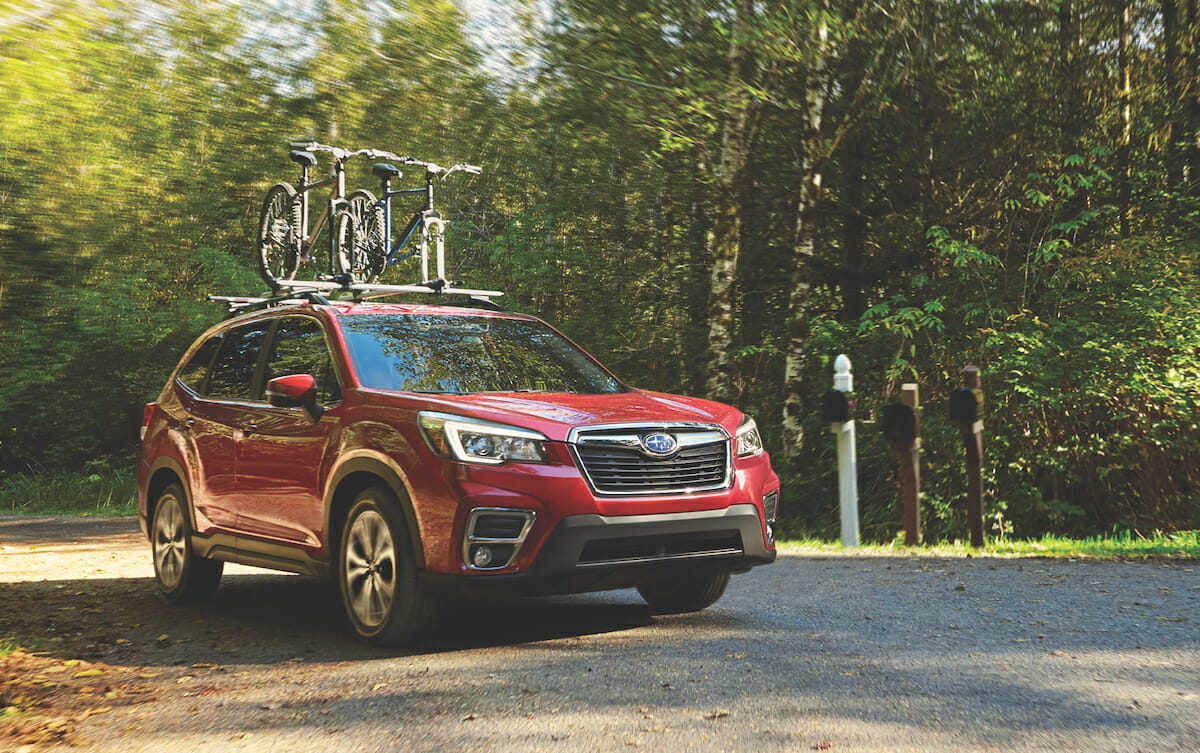
Subaru Forester Fifth-generation (2019-Present)
The fifth-generation Forester landed in showrooms for the 2019 model year. Like its predecessor, the fifth generation grew yet again adding additional cargo space and extra room in the cabin.
Importantly, the new Forester made EyeSight and Apple CarPlay/Android Auto standard. Also, only one engine and transmission are offered on the new Forester, a 2.5L H4 mated to a CVT.
To maintain the status quo, the Forester comes equipped with standard AWD. However, there are three trim-dependent AWD systems for the fifth-generation Forester.
The base model Forester received a basic AWD system which dynamically shifted power as needed. The Premium trim gets an enhanced X-Mode as well as the addition of hill descent control. Standard on the Sport, Limited, and Touring trims is a further enhanced X-Mode including snow/dirt and deep snow/mud modes.
Fifth-generation Forester Trims
- Forester (Base): Standard equipment on the base model Forester includes 17-inch steel wheels, automatic headlights, a backup camera, automatic climate control, a tilt-and-telescoping steering wheel, push-button start, Bluetooth, Apple CarPlay and Android Auto capability, a 6.5-inch touchscreen infotainment system, and a four-speaker audio system. Most importantly, Subaru’s driving assist suite is standard. This is comprised of adaptive cruise control, lane departure warning, lane-keeping assist, and pre-collision warning with automatic braking.
- Forester Premium: The Premium trim adds alloy wheels, roof rails, a panoramic sunroof, a rear spoiler, hill descent control, a power driver’s seat, a Wi-Fi hotspot, additional traction modes for X-Mode, and a six-speaker sound system.
- Forester Sport: Next up, the Sport trim brings 18-inch black wheels, automatic high beams, keyless entry, paddle shifters, and the All-Weather package. The All-Weather package adds a front windshield wiper de-icer as well as heated mirrors and front seats.
- Forester Limited: The Limited trim drops the paddle shifters from the Sport. However, it adds self-leveling and adaptive headlights, dual-zone automatic climate control, leather upholstery, an 8-inch touchscreen infotainment system, a blind-spot monitoring system, and a power liftgate.
- Forester Touring: The top-of-the-line Touring trim adds memory to the driver seat, a powered passenger seat, heated rear seats, and the Driver Focus system. The Driver Focus system uses a camera in the dash to monitor how alert the driver is, as well as a sensor in the steering wheel which checks for occasional input.
Fifth-generation Yearly Updates
- 2020: A lane-centering feature was added to Subaru’s safety suite on the Forester.
- 2021: Subaru added automatic high beams and turn-swiveling headlights to the list of standard equipment on the Forester.
Fifth-generation Forester: Problem Areas
The fifth-generation Subaru Forester is hands down the safest Forester yet. It received an IIHS Top Safety Pick+ for every model year, 2019-2021. The only black mark on the Foresters safety sheet is the headlights equipped on the Sports trim for the 2019-2020 model year. This can be chalked up to the fact that it was not equipped with curve-adaptive headlights like the rest of the lot.
When it comes to reliability, the new Forester is on par with the previous generations. For the 2019 model year, the Forester received 420 complaints according to the NHTSA. The most common problem is once more the fragile windshield, which seems to be single-handedly keeping the windshield repair industry in business. This problem has yet to be recalled, however, it accounted for most complaints for both the 2020 and 2021 model years.
Best Subaru Forester Year to Buy
There are several reasons to buy a Forester. The most common reason is to use it as a reliable, safe, comfortable, and spacious family car. The best Forester model years in regard to safety and ample space are 2019 to present vehicles (fifth-generation).
With Subaru’s EyeSight, a laundry list of standard safety technologies, and an IIHS Top Safety Pick, the fifth-generation Forester is safer than ever.
Also, since it’s not powered by the previous problem-riddled turbo model — reliability receives a boost. However, if you’re looking for the original Forester design without the engine problems, check out a turbocharged version of any models from 2004 through 2008 (second-generation).
Worst Subaru Forester to Buy
Due to the lack of reliability, the first (1998-2002) and third generations (2009-2013) come less recommended. Among other common problems, these vehicles are prone to head gasket failure. If the head gasket does blow, it can cost owners somewhere between $1,500 and $2,000 to fix.
Photos: Subaru; WikiCommons
